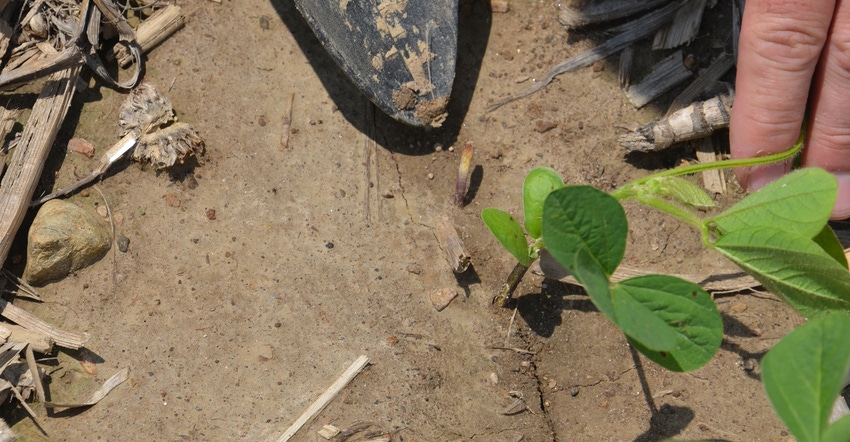
A wet spring and delayed planting bring their own set of problems. Soybeans aren’t immune to yield loss due to delayed planting, but they also aren’t immune to crusting and soil compaction linked to working soils that are too wet.
“There are potential problems with planting soybeans if it’s borderline tacky or wet underneath the surface, even in split-row, no-till planting,” says Steve Gauck, Greensburg, Ind. He’s a sales agronomist for Beck’s. He also provides advice throughout the year while following the progress of one soybean field in central Indiana for the Soybean Watch project. Beck’s is the sponsor of Soybean Watch ’19.
At press time, the Soybean Watch ’19 field wasn’t planted yet due to the wet spring.
Cautions and concerns
“Sidewall compaction can happen in soybeans just like corn,” Gauck says. “Restricting root growth of soybeans will affect nutrient uptake and could cause yield loss.”
Problems with planting into wet soils sometimes begins with the planting process itself. “Tacky soil will sometimes not allow closing wheels to properly close the seed trench,” Gauck explains. “This exposes the seed to insects and herbicides applied on the field.”
If soils are wet underneath, even in no-till planting, there may be an impact. “Planting into these conditions can cause poor seed-to-soil contact, because the soil doesn’t crumble back in along the seed, leaving air pockets,” Gauck says. “Poor seed-to-soil contact often leads to uneven emergence.”
Uneven emergence becomes an issue because it pits soybean seedlings trying to emerge against their neighbors. Individual seedlings are on their own instead of working together to emerge at one time, Gauck says.
Deal with crust
Soil crusting has plagued soybean growers for decades in years with wet springs, and can be an issue even in no-till in some cases.
“Soil crusting can be difficult to fight in some years,” Gauck says. “If a crust develops and beans haven’t emerged, running a rotary hoe is best if you have one.
“The problem is, to be effective, you must be using [the hoe] the day before you think you have a problem.”
If a field has a history of soil-crusting problems, there may be more going on than just planting at the wrong time.
“Take a look at your soil calcium levels and soil pH to start correcting it,” Gauck advises. He’s seen a tie between calcium levels, pH and crusting in some fields.
Part of the secret to better emergence in tricky situations, such as when soils begin to crust after a rain that came after planting, is to have soybeans planted into consistent soil moisture at a consistent soil temperature, Gauck says.
“Just like with corn, we want all the soybean seedlings to come up evenly and quickly,” he says. “When soybeans are planted deeper than many people traditionally plant, we tend to get more even emergence and more bean seedlings pushing on the crust at the same time. Soybeans have a lot of pushing power if there are enough of them trying to push through at the same time.”
Some people might be tempted to revert to thicker seeding in case a crust develops. The logic is that with more seeds germinating and seeds closer together, there would be more pushing power.
“That won’t help if extra seeds emerge as individuals and not as a team,” Gauck concludes.
About the Author(s)
You May Also Like




